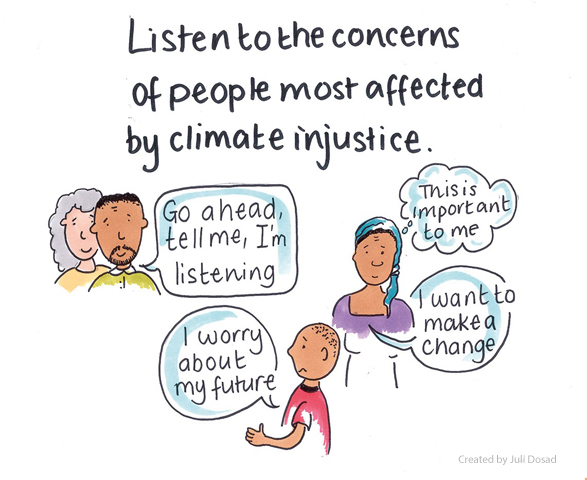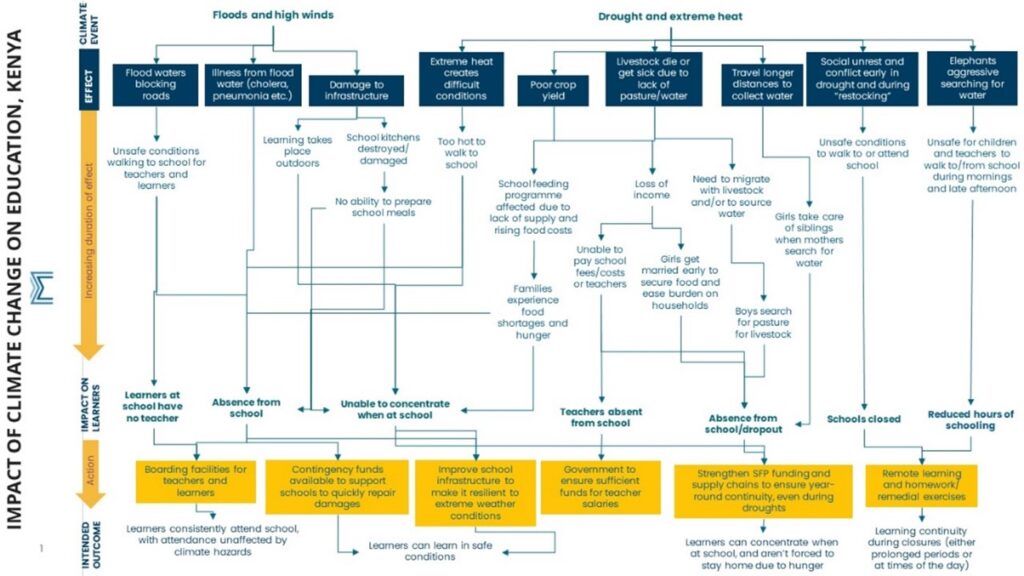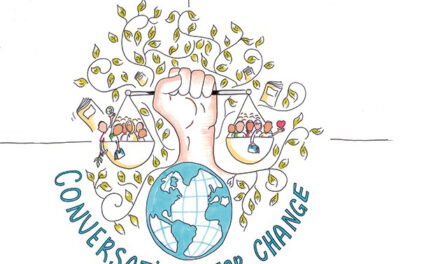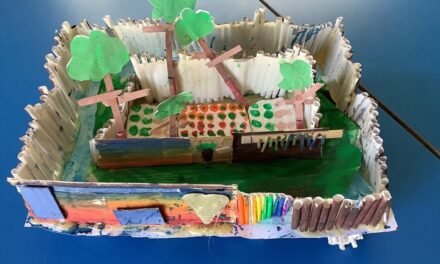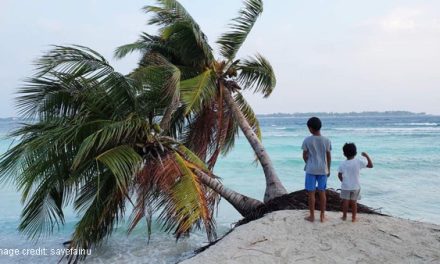In this Education for Climate Justice blog series, we bring you new research, case studies and examples of education for climate action from across the globe. We aim to provoke discussion and encourage learning and collaborations that promote environmental and social justice through new models and practices of education. This series is supported by JustEd at the University of Bath.
This first blog in the series was written by: Dr Terra Sprague, Research Associate, University of Bath; Donvan Amenya, Education Specialist, Education Development Trust; Olivia Copsey, Education for Sustainable Development practitioner and researcher; and Dr Rachel Wilder, Lecturer, University of Bath.
In November 2023 at COP27, countries agreed to ‘ACE’ – the Action for Climate Empowerment plan – to enable all members of society, including children and youth, to better understand climate change and take action to support transitions to a more low-emission, climate resilient world. ACE prioritises education alongside five other elements. Importantly, it recognises that the circumstances and capabilities of different countries vary and thus that ACE should be implemented according to the national context.
We know already that climate change is aggravating existing inequalities across the world. People living in least developed, and conflict affected contexts are bearing the brunt of climate-related damage and harm due to a combination of geographical, social and economic vulnerabilities. For example, in 2022, when three separate tropical storms Ana, Batsirai, and Dumako, hit the Southeast Coast of Madagascar in the space of five weeks, 2,562 classrooms were destroyed, leaving 133,627 children without education. In a stroke of bitter irony, climate change reduces already limited resources for climate change education in the world’s poorest countries.
While the injustices are clear, we know far less about how educational responses for climate action and empowerment can amplify the voices of disproportionately affected groups and help to mitigate the unequal impacts of climate change. Participants at ‘Conversations for Change: The Future of education for Global Climate Justice’, an event hosted by UKIFET in November 2022, agreed that this should be a priority for education that seeks to advance climate justice.
In this blog, we look at two countries where such disproportionate effects are felt, with examples of how this impacts education and some responses. The first example is from Kenya and the second from Bahamas.
Recent work by the Education Development Trust highlights the severity of the impacts of climate change on Kenya’s education system and also illustrates some approaches for addressing the needs of those most affected.
Figure 1: Disproportionate effects of climate change and environmental crisis within Kenya.
Kenya is one of the most disaster-prone countries with estimates showing that 70% of natural disasters are attributable to extreme climate events. Projections show that temperatures will rise by 1.7 degrees by 2050 and by approximately 3.5 degrees at the end of the century. Climate change is manifested in extreme weather conditions, such as prolonged droughts and flooding which have both direct and indirect impacts on education, including:
- Halting of school feeding programmes due to supply challenges
- Inter-community conflicts over competition for water and pasture, leading to loss of life and closure of schools
- Destruction of school infrastructure such as school buildings
- Straying of elephants into community areas in search of vegetation and water posing risks to learners
- Withdrawal of children from school to support in taking care of livestock during drought shocks
- Learners with disabilities disproportionately – they are often the first to be withdrawn from school as household resources are redirected to buying food in times of droughts.
More detail on the impact of climate change in Kenya’s schools can be found in Donvan Amenya’s presentation from the Conversations for Change event.
Education Development Trust’s ongoing climate education research in the East Africa region adopts a holistic approach to explore how various groups including learners, young women and youth, in different ecological zones are experiencing climate change. The research uses a justice lens approach to explore how young people interact with the community to influence and shape their thinking and actions on climate change, far beyond the confines of formal schooling. Key findings from the study include:
- There is varied and often limited understanding of climate change and its causes amongst learners, out-of-school youth, and the community.
- In times of climate shocks, education becomes a luxury that households cannot afford and learners with disabilities are often the first to be withdrawn from school to redirect household resources to buying food.
- The current climate change curriculum is not contextually relevant and does not develop learners’ knowledge on the causes of climate change and practical mitigation/adaptation measures to implement in their communities.
Through its Eco-Schools programme, the Foundation for Environmental Education (FEE) is also supporting global efforts to educate children, youth and adults to increase awareness, shift mindsets and behaviour to mitigate climate change and the growing strength and frequency of natural disasters. As a global network with over 67,000 schools in 73 countries, FEE found a new role in 2019 mobilising support for the recovery of educational infrastructure after Hurricane Dorian destroyed twelve Eco-Schools in the Bahamas. The Children for Children campaign activated the Eco-Schools’ child-led approach to encourage learners from their global programme to share their stories of climate change action and impact with one another and raise funds for disaster-affected Eco-Schools.
Resources shared to schools as part of this campaign included the Eco-Schools Indian Ocean Disaster Risk Reduction Toolkit. This resource employs a participatory, child-led Vulnerability and Capacity Assessment process. This process empowers children to analyse and monitor and communicate disaster risks, vulnerabilities, and capacities in and around their schools and communities and put in place their own measures to affect change. Children are often not heard in decision-making processes related to climate action, so this tool is emerging as an example of good practice for supporting children to contribute meaningfully in local decision-making and in particular in the post-disaster rebuilding of their own schools and community resources. Research suggests that a sense of inclusion and ownership is important as part of community re-building to aid psycho-social recovery.
The importance of listening to those disproportionately affected by climate change, integrating their stories and realities into climate change curriculum, and involving children and the wider community in developing both practical responses and educational policies and materials to address climate change are all key aspects of the ‘Just and Ambitious’ Call to Action developed as part of the November 2022 event hosted by UKFIET. You can read the full Call to Action and see more stories of disproportionately affected communities and their responses on the dedicated page on the UKFIET website.
In the forthcoming blogs of this series on Education for Climate Justice, we will bring you further examples of initiatives and programmes that are using a justice perspective within environmental and climate change education. These will include global initiatives as well as national and local projects that listen to those disproportionately affected, thereby bringing such perspectives more clearly into view and into discussion with the policymaking process, curriculum development and pedagogy.
This is the first in the Education for Climate Justice blog series. Subsequent issues can be read here:
Pedagogies for climate justice: Helping young people be hopeful for the future
Breaking beyond classroom walls to learn IN nature for climate justice
Girls and climate justice education: Experience from two initiatives
You can read other content on the UKFIET website relating to climate change and climate justice here, including more about our Conversations for Change event.

